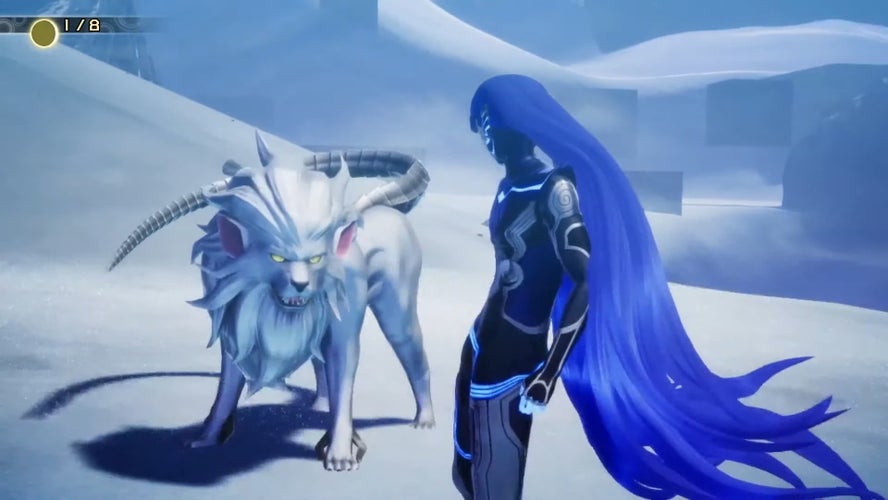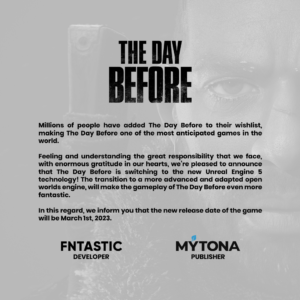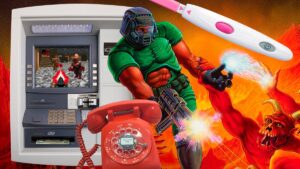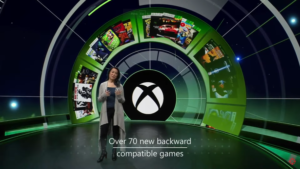Shin Megami Tensei V feels like the edgier, less sociable younger brother of Persona 5, even though Persona began as a spin-off to the series. Both branches of the family share much of their cast of highly customizable demons, like mythological Pokemon you smash together to make even more powerful ones. They have similar, excellent turn-based combat systems that encourage you to fish for your opponents’ weaknesses and make smart use of every resource available to you. What’s missing from the Persona formula here is a lot of its heart, but Shin Megami Tensei V still rises to succeed in most other ways.
The bulk of the action takes place across four expansive, open areas of the Netherworld: an alternate reality reflecting a post-apocalyptic Tokyo crawling with mythological beasts and heroes. They range from the sun-baked desert expanse of Minato to the gloomy, blood red badlands of Shinagawa, and each one echoes an area of real-world Tokyo with ruined buildings and major landmarks jutting out of the wastes. They all have a very distinct vibe, diverging from a central theme of surreal, techno-religious weirdness. While you’ll fight lots of intense battles within them, these bizarre cityscapes also encourage exploration and even involve some tricky platforming to find all of the hidden Miman – little red dudes who give you a currency you can use on miraculous bonuses for your whole party or to customize the protagonist.
And customization is the main pillar of SMT5. Since there are no human party members who stay with you the whole adventure, you’ll build a rotating team of three demons who all have their own strengths, weaknesses, and special tricks. Fusing two or more demons into stronger ones is central to your progression, but you can also hoard items called grimoires that let you continue powering up a couple specific demons you want to keep with you for the long haul, which I really appreciated. Gaining new demons involves a negotiation system which requires learning each demon’s personality and what kind of responses will please them, which admittedly seemed overly random at times. But it could also be pretty funny when I picked what seemed like the perfect response only to have the rug pulled out from under me by an unexpected objection – like a vainglorious fairy who runs away if you call her beautiful because she’s too shy to handle such a compliment, or an unhinged horse demon who only takes a liking to you if you insult him repeatedly.
ESSENTIAL ESSENCE
Things really get interesting when you factor in the essence system, though, which lets you teach skills from a different demon to an existing one, and even inherit their elemental resistances and weaknesses. Between fusion, miracles, and essences, it’s possible to create some absurdly powerful and specialized teams that can take on almost any challenge. The way these systems interact isn’t spelled out especially well, but I really enjoyed the gradual path to mastering them myself through trial and error. A hunger to experiment is a huge plus in this netherworld.
And mastery is basically a necessity unless you want to play on the easier difficulty. Shin Megami Tensei has a reputation for being brutally difficult as a series, and I was able to see why, even on its Normal mode. Just using the strongest demons I came across naturally, I often got chewed up and spit out pretty quickly – especially against certain bosses and in the last quarter of the story. But that’s only until I realized that the real challenge was in meticulously creating the perfect team for each area, and sometimes even each fight. All of the tools are there, and if you know how to use them, you can blow right past enemies that once seemed unbeatable. But there is no mercy to be found if you don’t, so going in with the right mindset is a must.
There’s also a fair bit of grinding involved if you want to keep pace with the challenges ahead, which isn’t that unexpected for a JRPG. It definitely drags on at times when you might have to fight the same group of enemies 10, 15, or even 20 times in the same area to level up. Some sort of randomized battle modifier just to shake things up now and then would have been really welcome. Again, I think about the Showtime attacks and unstable shadows added in the Royal version of Persona 5 as examples of how Atlus has tackled this problem successfully in the past. You can skip some amount of grinding by cleverly exploiting a specific enemy type that you’ll have to figure out for yourself, but you can’t avoid it entirely – especially toward the very end.
When you’re not exploring and battling your way through the wastelands, you’ll spend a few short interludes back in the non-apocalyptic version of Tokyo, which felt kind of like an unnecessary minigame. You move a little pawn around a zoomed-out cityscape where there’s really not much to do or interact with, but these segments are generally over before you know it. Each chapter also concludes with a substantial mega dungeon – though only one of the three, a hellish fortress complete with challenging jumping puzzles, felt significantly different from the rest of the adventure. The other two are mostly just hallways filled with monsters. The final dungeon sort of half tries to introduce an interesting new mechanic with doorways that start and stop time when you pass through them, but it ends up being less of a puzzle and more of a way to force you to backtrack. The solutions were all too mindlessly straightforward to feel like I’d accomplished anything.
Why Can’t We Be Friends
The other area where SMT5 consistently fell short for me was the writing. It takes upwards of 20 hours to find any personal motivation beyond survival and figuring out what’s going on, and the companion characters are also very under-developed. You don’t get to spend enough time with most of them for one thing, since they don’t usually join you in battle or even have their own side stories. You run into them for a few minutes during cutscenes after many hours of adventuring, and none of them seem to have in-depth backgrounds or even much of a character arc. They exist mostly as decoration on a story that cares more about big concepts than people.
The main story is definitely interesting at least, and not just another rehash of God vs Satan for control of humanity’s destiny. While I won’t spoil anything, the three possible endings are a bit more nuanced than that. Although, your decisions right up to the moment you “lock in” to one path don’t seem to affect them at all, and things become pretty convoluted at the very end. It introduces an entirely new metaphysical concept through an expository dialogue dump at basically the last possible moment, which seems meant to recontextualize the whole situation, but then doesn’t really explain how it works or even what exactly happened with it after the final battle. This left the last hour or so feeling like a somewhat cold, confusing conclusion to an epic, 80-hour undertaking I otherwise enjoyed.
At least the art throughout is exceptional. It’s every bit as visually stylish as any other Atlus game, and I love the design of the main character. The demons, both new and familiar to series veterans, look and sound awesome, and have some fantastic unique attack animations. There are definitely some framerate issues in certain areas though, and details like grass that only pop in when you’re very close can be distracting. Atlus really tried to push the limits of the Switch’s hardware, and it’s a gamble that pays off in some spots and not in others. On the other hand, the moody music is pretty great, too, even if it’s never as emotional or memorable as Persona’s iconic vocal tracks.
Source: https://www.ign.com/articles/shin-megami-tensei-v-review
- 7
- Action
- Adventure
- All
- AREA
- around
- Art
- Battle
- Bit
- blood
- Bonuses
- branches
- build
- call
- challenge
- challenging
- Conclusion
- continue
- Couple
- Creating
- Currency
- Design
- ends
- Expand
- experiment
- exploration
- fair
- family
- Figure
- fish
- Fortress
- funny
- game
- great
- Group
- Hardware
- here
- horse
- How
- How To
- HTTPS
- huge
- human
- Humanity
- i
- image
- Insult
- involved
- issues
- IT
- join
- learning
- Level
- Long
- love
- major
- mastery
- Members
- motivation
- move
- Music
- open
- Other
- People
- Personality
- Pillar
- play
- Plus
- pokemon
- protagonist
- Puzzle
- Randomized
- range
- RE
- Reality
- requires
- resource
- response
- REST
- review
- Run
- s
- segments
- Series
- Share
- Short
- skills
- smart
- So
- Solutions
- specialized
- spend
- start
- stay
- Stories
- straightforward
- Switch
- system
- Systems
- The
- theme
- time
- tokyo
- trial
- unique
- Veterans
- What
- WHO
- within
- works
- writing





